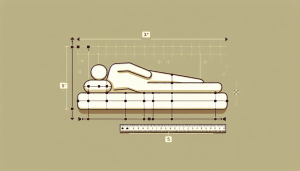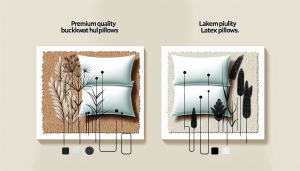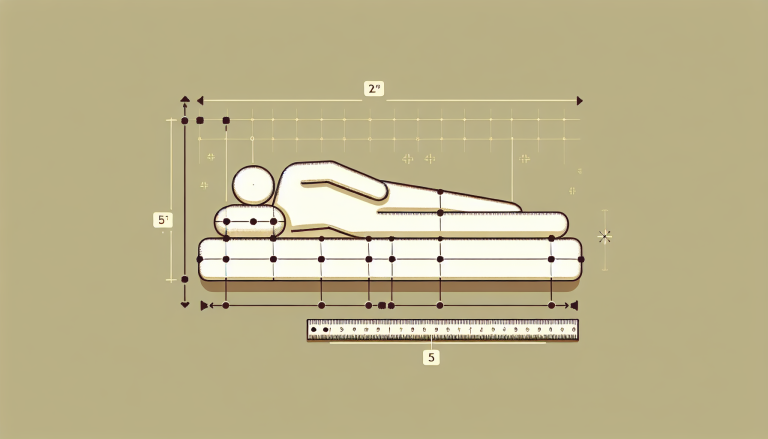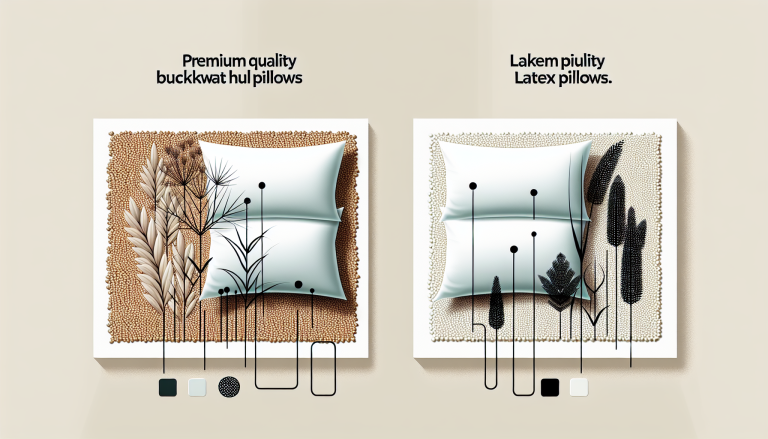When it comes to staying warm and cozy in bed, nothing beats the cloud-like fluffiness of a down quilt. These lightweight yet insulating blankets are filled with the soft undercoating of geese or ducks, providing superior loft and warmth without a lot of added weight. But with so many options available, how do you choose the perfect down quilt for your needs? In this comprehensive guide, we’ll break down everything you need to know, from fill power and quilt construction to ethical sourcing and care instructions. By the end, you’ll be ready to shop for a luxurious down quilt that will keep you toasty for years to come. Let’s dive in!
Down Basics: Fill Power, Quality, and Types
The first thing to understand when quilt shopping is fill power. This measures the loft or “fluffiness” of the down and its insulating abilities. Higher fill powers, like 800 or above, mean that the down takes up more space and traps more air, providing greater warmth with less overall weight. Most down quilts use either goose down or duck down, with goose generally being lighter and more expensive.
It’s also important to look at down cluster size and quality. Larger clusters loft better and last longer before breaking down. Reputable brands will note the percentage of down clusters in their quilts. Avoid any quilts that feel flat, chunky, or have an odor.
Finally, pay attention to the outer fabric. It should be tightly woven and “down proof” to prevent feathers from poking through. Look for a high thread count made from soft, breathable cotton or another natural fiber.
Fill Power Comparison
| Fill Power | Warmth Level | Price |
|---|---|---|
| 500-599 | Light | $ |
| 600-699 | Medium | $$ |
| 700-799 | Warm | $$$ |
| 800+ | Extra Warm | $$$$ |
Quilt Construction: Stitching, Baffles, and Fills
How a quilt is made matters just as much as what it’s filled with. Most high-quality down quilts use baffle box construction, which features fabric walls between the top and bottom layers to create three-dimensional boxes that allow the down to loft fully. This provides the most even warmth and prevents cold spots.
The stitching pattern can also impact the quilt’s performance. Quilted designs help keep the down in place but can compress it over time. Baffle boxes allow the down to expand into its fullest loft.
Some quilts feature down alternative fills made from hypoallergenic synthetic fibers like polyester or PrimaLoft. While not as light or fluffy as real down, these can be good options for those with allergies or looking for a lower price point.
Baffle Box vs Sewn-Through Construction
| Feature | Baffle Box | Sewn-Through |
|---|---|---|
| Warmth | Warmer, no cold spots | Potential cold spots |
| Loft | Maximum lofting | Can compress down |
| Weight | Slightly heavier | Lighter |
| Price | More expensive | Less expensive |
Finding Your Perfect Fit: Sizes, Warmth Ratings, and More
Down quilts come in all the standard bed sizes like twin, full/double, queen, and king. Be sure to choose one that will generously cover your bed, especially if you plan to use it as a duvet (with a cover) rather than a comforter.
Warmth ratings are often given in tog, a measure of thermal insulation. A light summer quilt might have a 4-7 tog rating, while a cozy winter one could be 12-15. Some “all-season” quilts have multiple layers that you can add or remove to adjust for the temperature.
Consider your personal preferences as well. Hot sleepers may want a lightweight quilt with moisture-wicking properties, while cold sleepers will need maximum loft and a high tog rating. If you have allergies, look for hypoallergenic down or a down-alternative fill.
“When choosing a down quilt, think about your climate, the season, and your personal sleeping temperature. Side sleepers may prefer a loftier quilt, while stomach sleepers need something low-profile. Take time to find your ideal warmth and weight.” – Sarah Brown, Certified Sleep Coach
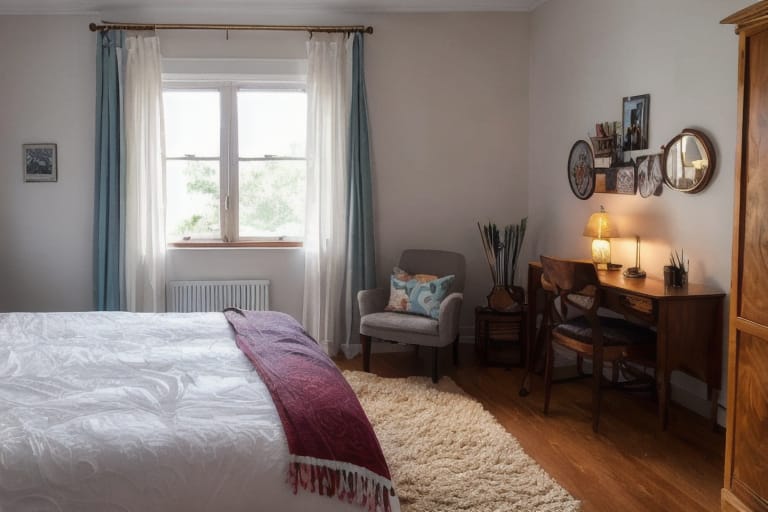
Caring for Your Investment: Washing, Drying, and Storage
Down quilts are definitely an investment, often costing hundreds of dollars. With proper care, though, a well-made quilt can last a decade or more. Always follow the manufacturer’s care instructions, which will likely recommend:
- Using a front-loading washer and a special down soap
- Washing on a delicate cycle in cold water
- Drying completely on low heat with wool dryer balls
- Never ironing or steaming the quilt
- Storing in a breathable cotton bag, not plastic
If your quilt starts to feel flat, you can fluff it in the dryer on air (no heat) with a few tennis balls. Professional dry cleaning is also an option, especially for treating stains. With regular fluffing and careful cleaning every 1-2 years, your quilt should maintain its loft and coziness.
“Never store your down quilt compressed in a plastic bag or box. The down needs to breathe and will clump if not given air. Use a large, breathable storage bag and keep it in a dry place.” – Martha Chan, Cleaning Expert at Neatly Maid
Choosing Ethical, Sustainable Down
These days, many shoppers are looking for eco-friendly, sustainable, and cruelty-free down. Luckily, there are several third-party certifications to look for:
- Responsible Down Standard (RDS) – ensures humane treatment of ducks and geese
- Global Traceable Down Standard (TDS) – certifies down can be traced to ethical sources
- OEKO-TEX Standard 100 – guarantees no harmful chemicals are used in processing
Some brands also follow their own strict ethical guidelines, such as Patagonia’s 100% Traceable Down. When in doubt, check the company website or contact customer service for details on their sourcing and sustainability practices.
Top Quilt Picks for Every Budget
Ready to shop? Here are our top down quilt recommendations at every price point:
| Brand & Model | Fill Power | Price (Queen) |
|---|---|---|
| Utopia Bedding Down Alternative | Polyester | $35 |
| Cosybay 100% Cotton Quilted Down | 600 | $130 |
| Brooklinen Down Comforter | 700 | $400 |
| Boll & Branch Down Duvet | 750 | $498 |
| Parachute All-Season Down Duvet | 750 | $569 |
Whether you’re after a light, low-cost quilt or a premium, lofty investment, there’s a perfect down quilt out there for you. By choosing the right fill power, size, warmth rating, and features, you’ll be on your way to your coziest, comfiest sleep ever.
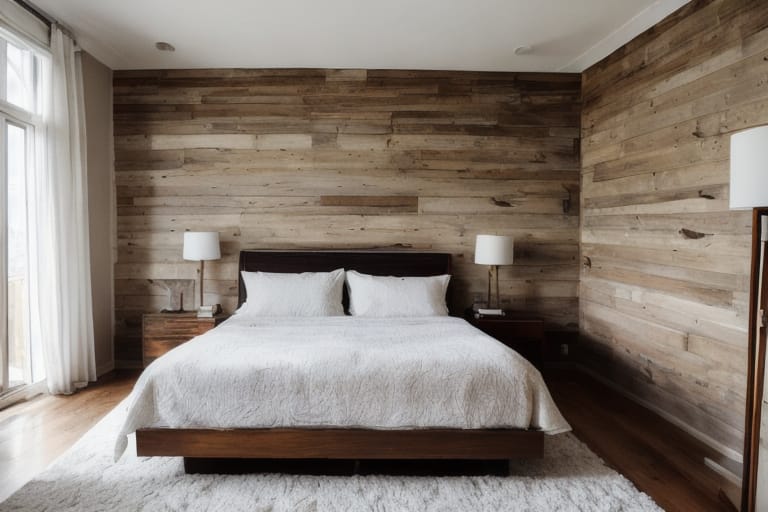
Frequently Asked Questions
- What is the difference between a comforter and a duvet? A comforter is a single quilted blanket that can be used alone, while a duvet is an insert meant to go inside a removable cover. Duvets tend to be loftier and are easy to change up with different covers.
- How do I know if a down quilt is warm enough for my needs? Look at the tog rating or warmth level. For mild climates, a 7-9 tog quilt will work for most of the year. If you sleep cold or live in frigid temperatures, aim for at least a 12 tog winter weight.
- Are there any real down alternatives that compare in quality? While nothing is quite as light and fluffy as real down, some microfiber fills have very fine fibers that mimic the loft and insulation of down clusters. Look for fills like PrimaLoft or GelTex that have a high warmth-to-weight ratio.
- What are some good indicators of quilt quality? High-quality down quilts will always list their fill power and down percentage (aim for at least 75% down clusters for optimal loft). They should feel substantial but not too heavy and have a soft, tightly woven outer fabric. Quilts made with sustainably sourced materials and ethical certifications also signal high quality.
- How often should I wash my down quilt? Unless it gets stained, you should only need to wash a down quilt every 1-2 years. Over-washing can cause the clusters to break down and lose loft. Between washes, air it outside occasionally and fluff in the dryer every few months to keep it fresh.
- What’s the best way to store a down quilt in the off-season? Always store down quilts in a breathable fabric bag, never plastic. Fold loosely and place in a cool, dry closet or storage area. You can also hang quilts in cotton storage bags to maintain loft.
- Is it worth spending more for a high fill power? That depends on your climate, goals, and budget. High fill powers provide the most warmth-to-weight, so they’re great for cold sleepers or anyone wanting maximum loft without heaviness. However, lower fill powers still offer plenty of coziness at a friendlier price point. Aim for at least 600 fill power unless you’re after a very lightweight quilt.

